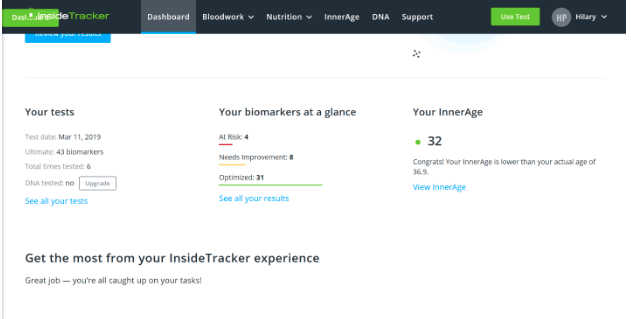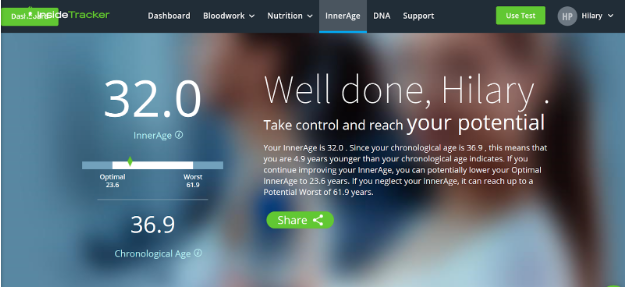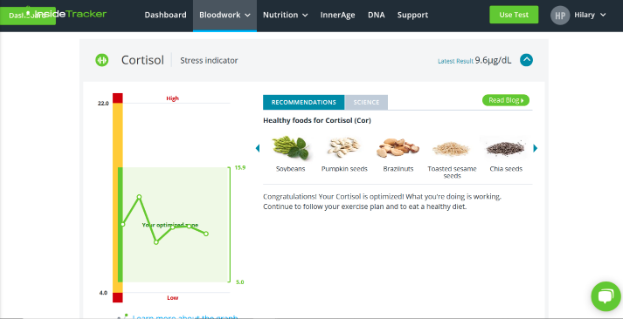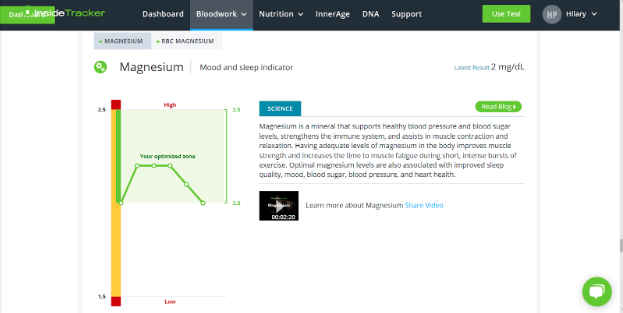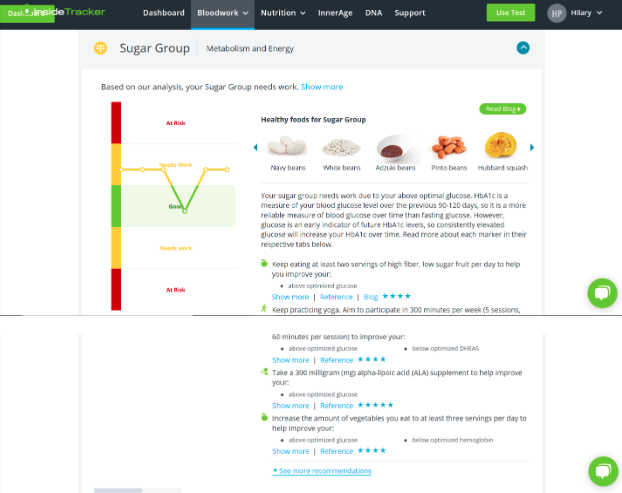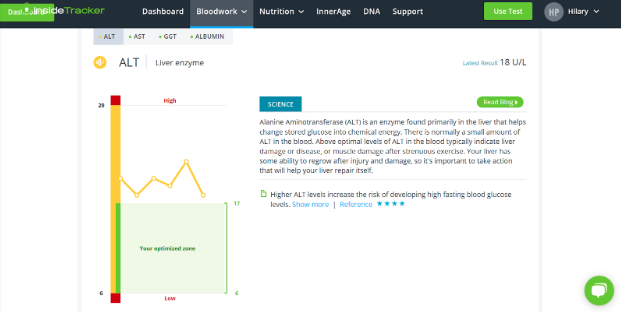Have you ever heard the saying “you are what you eat?” It couldn’t be truer. Everything that we put in our mouths becomes a building block of who we are today and in the future. And each of us is completely different, needs different nutrients and uses the building blocks in different ways. Athletes’ bodies need different food and ratio of nutrients than a CEO, accountant or acupuncturist. This is all compounded by the fact that our individual bodies may also have sensitivities to certain foods, which then causes inflammation, irritability and potentially, allergies. How can we possibly get a snapshot of what is going on inside of our bodies? How in the world is it possible to have a clear and succinct understanding of what is going on in our organs, muscles and blood which can help direct of food choices?
Drum roll… Inside Tracker (IT), a blood analysis company does just that. It gives you a clear, simple and actionable picture of how healthy you are and what you can do about it. If you are at risk either from an excess or deficiency, IT provides you with videos, blogs, food suggestions and informational tid-bits for you to understand and harness the power of food. Food is our first line of defense. It is the “medicine” that we put in our bodies daily. But much of the time we are guessing about what we should or shouldn’t be putting in our bodies. Take the guess work out and try Inside Tracker.
*It is not a food sensitivity test. It looks at the biomarkers in your blood and makes suggestions on specific markers that are too high or too low and suggests foods that would help you optimize your diet to reach your potential.
My most recent test was last year, just before the Boston Marathon when I was putting in a lot of miles and pushing my body. I tested 43 biomarkers. Of those 43 biomarkers, 31 of them were optimized, 8 needed improvement and 4 were at risk. My at-risk biomarkers involve my white blood cell count (WBCC). I have had further testing and naturally have really low white blood cell numbers. It would be very concerning if my WBCC had dropped suddenly, but it is always extremely low, yet I hardly every get sick. Establishing a baseline is important because sometimes our bodies have odd intricacies like this.
I also love testing my Inner Age. This compares my chronological age with the age my body appears to be. Here is where the competitor really comes out in me! I love seeing my InnerAge be years younger than my chronical age. That means that my insides are healthy, vibrant and thriving. To me it means that what I am doing to manage stress is working and my diets and lifestyle is supporting my inner body. I was 37 years old, yet my InnerAge (was only 32). I always hope to have my InnerAge be five or more years younger than my chronological age. And to continue to nourish my InnerAge as my chronological age increases, I should eat salmon, avocado, peanut butter, hazelnuts and sunflower seeds. Yum!
Now, to give you an idea of some of the biomarkers that Inside Tracker looks at…
Cortisol
Cortisol has been a hot topic for me since I over trained and my cortisol levels were through the roof. It is a biomarker that I always get anxious to see since I know what can happen if it is too high. Cortisol is a stress marker both physically and mentally. The body sees stress the same way, whether it comes from training, work or family. Our body is not picky, if it feels stress it spikes our cortisol levels. I am proud to say that I have remained optimized for cortisol my last six tests. It shows me that my stress management tools, and diet are helping keep my cortisol levels from elevating.
Magnesium
Magnesium is a mineral that helps with sleep, muscle contraction and management of blood pressure and blood sugar. At my last test, I was still optimized, but I am right on the boarder of being at risk. If I have more questions on what this means and what I can do about it, I have the option of watching the handy video.
Sugar
Although I don’t eat a lot of sucrose (table sugar, candy, cakes and cookies), I tend to have higher than optimal levels of HbA1c which measures my fasting glucose levels over the past 90-120 days, which is a more reliable marker than resting glucose which is indicative of blood glucose levels currently, not in the past. You can see all the suggestion IT gave me to help lower my HbA1c levels. This information is simple and powerful and helps me take control of my body. There is the potential that I will always have elevated HbA1c levels, but I can help decrease them so they don’t cause damage.
ALT
ALT is a liver enzyme that helps turn stored energy into usable energy. You can see that my ALT levels are slightly elevated. This could mean that I have liver damage or disease, but it more likely means that I was damaging my muscles on a daily basis with my intense training. I would guess that my ALT levels would be lower now that I’m not training for a marathon, but only an IT test could tell me. A kicker here is that high ALT levels can cause higher blood glucose levels. Everything is interconnected!
I am always striving and pushing to reach my potential. Inside Tracker takes some of the guess work out. It helps direct me on where I’ve been and how I can change where I’m going. If you are interested in learning more about what your blood can tell you, please visit Featured Products to order your test! Bonus, if you give me permission to look at your results, I am happy to review them with you! #blooddontlie


